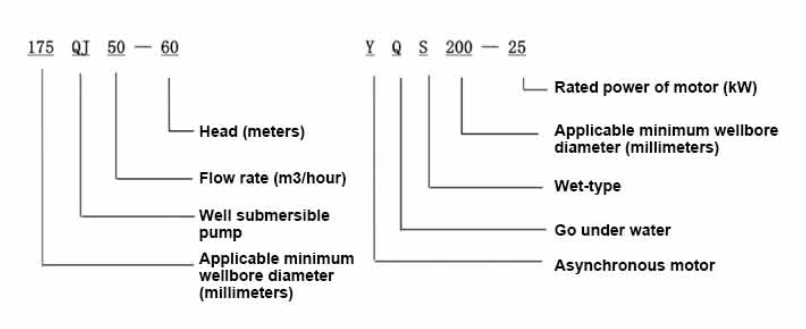Aug . 14, 2024 10:51 Back to list
Understanding the Importance of Check Valves in Deep Well Submersible Pump Systems for Optimal Performance
Deep Well Submersible Pump Check Valve A Critical Component for Efficient Water Extraction
Deep well submersible pumps are essential in various applications, including agricultural irrigation, municipal water systems, and groundwater extraction. These pumps are designed to operate underwater, utilizing a motor to drive the impeller that pushes water to the surface. To ensure optimal performance and longevity of the pump system, the check valve plays a pivotal role.
What is a Check Valve?
A check valve is a mechanical device that allows fluid to flow in one direction while preventing backflow. When installed in deep well submersible pump systems, check valves serve to maintain the water column pressure even when the pump is turned off. This prevents water from flowing back down the well, which can otherwise lead to system inefficiencies and potential damage to the pump.
Importance of Check Valves in Submersible Pumps
1. Prevention of Backflow One of the primary functions of a check valve is to stop backflow from the discharge pipe. Without a check valve, when the pump shuts off, water can drain back into the well, causing a loss of prime. This means the pump would need to work harder to regain suction on the next cycle, increasing wear and tear.
2. Energy Efficiency By maintaining the water column in the pipe, check valves help to reduce the energy required to operate the pump. This not only lowers electricity costs but also extends the lifespan of the pump system. Systems that frequently engage in starting and stopping cycles due to backflow can suffer from increased operational costs and reduced efficiency.
3. Reduction of Noise and Vibration The absence of backflow can also lead to a quieter operation of the pump system. Water hammer, or a sudden change in pressure due to backflow, can create vibrations and noise within the piping system. By incorporating a check valve, these issues can be significantly minimized, contributing to a more stable and quieter operation.
deep well submersible pump check valve

4. Maintenance of System Integrity Properly functioning check valves help maintain the overall integrity of the water delivery system. By preventing contaminants in the well from flowing back into the water supply, check valves improve the quality of the water being extracted. This is particularly important for municipalities and agricultural operations that require clean water for their services.
Types of Check Valves
There are several types of check valves that can be utilized with deep well submersible pumps. The most common include
- Swing Check Valves These valves have a swinging disc that allows water to flow in one direction. They are commonly used in applications where pressure differentials are not too high.
- Lift Check Valves These use a disc that moves up and down, allowing fluid to flow through when in the open position. They are more suitable for applications with higher flow rates.
- Spring-Loaded Check Valves These incorporate a spring mechanism that allows for quicker response times to backflow conditions, making them ideal for systems that require high reliability.
Conclusion
In conclusion, selecting the right check valve for a deep well submersible pump is crucial for ensuring efficient water extraction and system longevity. Not only do check valves prevent backflow, but they also enhance energy efficiency, reduce noise, and maintain the quality of the water being delivered. As such, investing in a high-quality check valve is a wise decision for any operation reliant on deep well pumping systems. By understanding their importance and functionality, users can optimize their pumping systems and reduce overall operational costs, paving the way for sustainable water management practices.
-
Submersible Water Pump: The Efficient 'Power Pioneer' of the Underwater World
NewsJul.01,2025
-
Submersible Pond Pump: The Hidden Guardian of Water Landscape Ecology
NewsJul.01,2025
-
Stainless Well Pump: A Reliable and Durable Pumping Main Force
NewsJul.01,2025
-
Stainless Steel Submersible Pump: An Efficient and Versatile Tool for Underwater Operations
NewsJul.01,2025
-
Deep Well Submersible Pump: An Efficient 'Sucker' of Groundwater Sources
NewsJul.01,2025
-
Deep Water Well Pump: An Efficient 'Sucker' of Groundwater Sources
NewsJul.01,2025
-
 Submersible Water Pump: The Efficient 'Power Pioneer' of the Underwater WorldIn the field of hydraulic equipment, the Submersible Water Pump has become the core equipment for underwater operations and water resource transportation due to its unique design and excellent performance.Detail
Submersible Water Pump: The Efficient 'Power Pioneer' of the Underwater WorldIn the field of hydraulic equipment, the Submersible Water Pump has become the core equipment for underwater operations and water resource transportation due to its unique design and excellent performance.Detail -
 Submersible Pond Pump: The Hidden Guardian of Water Landscape EcologyIn courtyard landscapes, ecological ponds, and even small-scale water conservancy projects, there is a silent yet indispensable equipment - the Submersible Pond Pump.Detail
Submersible Pond Pump: The Hidden Guardian of Water Landscape EcologyIn courtyard landscapes, ecological ponds, and even small-scale water conservancy projects, there is a silent yet indispensable equipment - the Submersible Pond Pump.Detail -
 Stainless Well Pump: A Reliable and Durable Pumping Main ForceIn the field of water resource transportation, Stainless Well Pump has become the core equipment for various pumping scenarios with its excellent performance and reliable quality.Detail
Stainless Well Pump: A Reliable and Durable Pumping Main ForceIn the field of water resource transportation, Stainless Well Pump has become the core equipment for various pumping scenarios with its excellent performance and reliable quality.Detail
